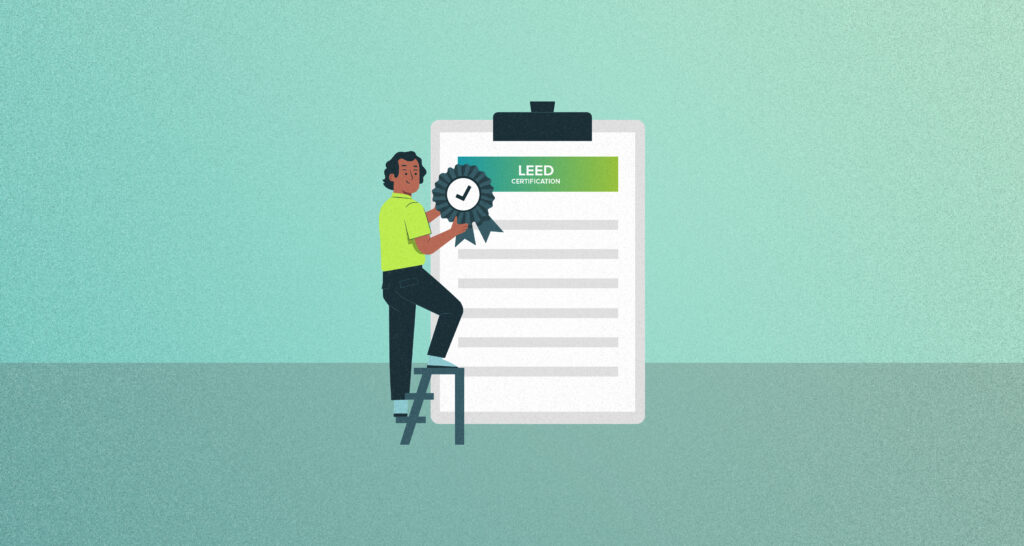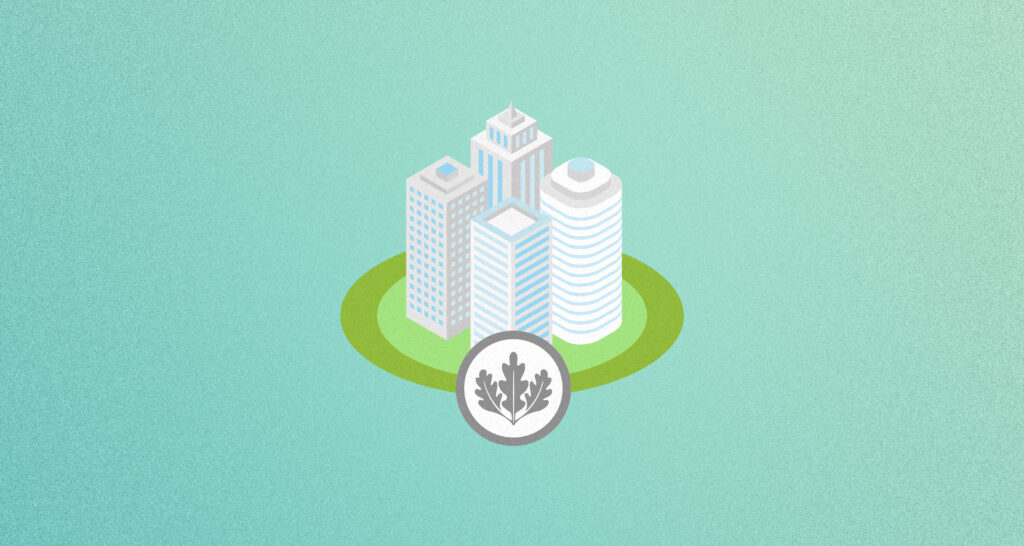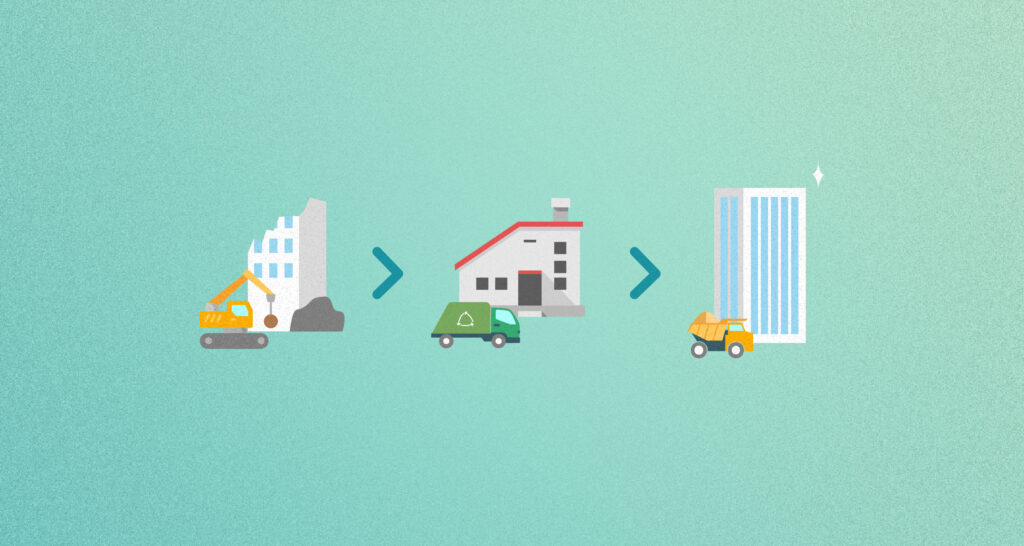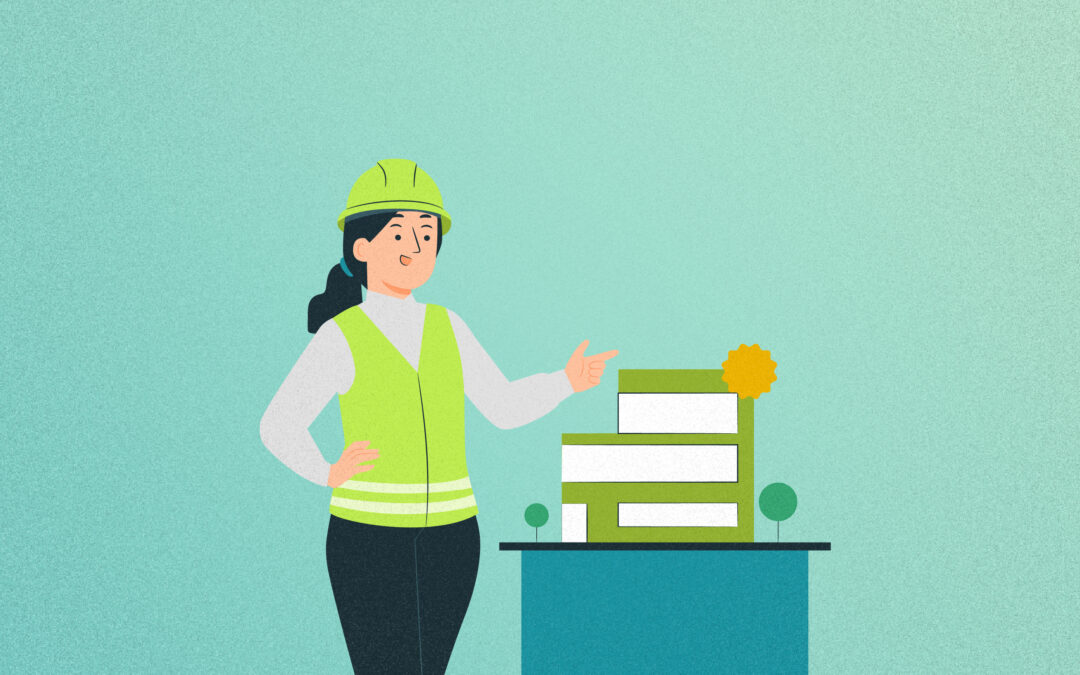A city is often known for its buildings, but construction and maintenance of those buildings consume resources at a frightening rate. To address climate change and meet ESG goals, LEED offers a healthy, efficient, green framework for buildings and communities. LEED projects have diverted an aggregated 80 million tons of waste from landfills, and the volume is expected to increase to 540 million tons by 2030.
In this article, we will discuss how LEED works, LEED for various projects, LEED-certified cities and communities, and the role of waste management.
How LEED Works
To get LEED-certified, a project needs to earn points and go through a verification and review process by GBCI (Green Business Certification Inc.). Projects earn points by following the prerequisites and credits that address carbon, water, energy, waste, health, transportation, material, and indoor environmental quality. The awarded points correspond to the following levels of LEED certification:
- Level Platinum: 80+ points
- Level Gold: 60-79 points
- Level Silver: 50-59 points
- Level Certified: 40-49 points

LEED for Different Projects
LEED is not specific to buildings of a certain type. It’s for buildings of all sizes and types and in any building phase, including new construction, interior fit-out, operations and maintenance, and core and shell. To get started with LEED certification, you can select the rating system that best fits your project.
- LEED for building design and construction (BD+C) is for new buildings and major renovations. Alongside new construction and core and shell, it includes applications for schools, retail, data centers, hospitals, etc.
- LEED for interior design and construction (ID+C) is for complete interior fit-out projects, including commercial interiors, retail, and hospitality.
- LEED for building operations and maintenance (O+M) is for existing buildings undergoing improvement work with little to no construction.
- LEED for neighborhood development (ND) is for new land development or redevelopment projects. These projects can be at any development stage, from conceptual planning to under construction.
- LEED for home is for all residential buildings. However, buildings and homes taller than four stories can also use LEED BD+C.
- LEED for cities is for entire and sub-sections of cities. It can measure and manage the city’s water consumption, energy consumption, transportation, waste, and human experience.
LEED-certified Cities and Communities
Since the 20 years that LEED was created, it has been established as a universally agreed-upon holistic system to reduce environmental impacts. Many cities and communities inside and outside of the United States are LEED-certified. From public spaces to airports and much more, LEED is encouraging growth with an emphasis on sustainability. We will discuss some LEED-certified cities and communities and what they’re doing right.
Las Vegas, USA
The famed city of Las Vegas needs no introduction, but did you know it’s a LEED-certified level Gold city with a 4-star rating? Las Vegas became LEED-certified in August 2020 when it implemented strategies to improve the sustainability and standard of living of its residents.
Balboa Park, San Diego
Balboa Park is a historic park in San Diego that got awarded LEED for community certification in 2021. Currently, it’s the only national historic landmark recognized for sustainability achievement through the United States Green Building Council.
Alongside Balboa Park, other places in San Diego, like the San Diego International Airport, have also adopted a zero-waste plan. The Airport Authority successfully diverted nearly 60,000 tons of materials (that would otherwise go to waste) when incorporating construction and demolition waste. They also implemented waste prevention strategies like material reuse and waste diversion strategies like recycling and composting to divert waste from landfills.
Beijing Daxing International Airport, China
Among international buildings, Beijing Daxing Airport is the first project in China that gained the LEED Platinum certification. It is thought to be a driving force for China’s economic growth, emphasizing green and sustainable development.

The Waste Hierarchy and LEED
While people fret more about carbon dioxide emissions coming from aviation, buildings account for nearly 40% of the overall carbon dioxide emissions. Almost a third of the world’s overall waste is construction and demolition waste. The Environmental Protection Agency (EPA) offers several strategies to reduce waste ranging from source reduction to waste to energy conversion.
Source Reduction
At the top of the waste hierarchy is source reduction. It’s important because it encourages the use of innovative construction strategies (like prefabrication) to minimize material cutoffs and inefficiencies.
Building and Material Reuse
The second most effective strategy to reduce waste is the reuse of building materials. The use of existing materials reduces the environmental impact of the manufacturing process. Replacing existing materials with new ones requires production and transportation, and it takes many years to offset the associated greenhouse gases via increased building efficiency. In LEED, the reuse of materials is highly encouraged and rewarded. In LEED v4, more flexibility and rewards are offered to all material reuse by projects both in situ and off-site.
Recycling
The most common way to divert waste from landfills is through recycling. Recycling largely depends upon waste sorting, and with recycling technology such as smart bins, it’s easier to sort and process materials right at the time of disposal. Smart bins like TrashBot reduce waste contamination and keep materials in the production stream for longer.
Waste to Energy
Lastly, since a secondary market does not exist for every material, the next best way to divert waste is by converting it to energy. Many countries, including Sweden and Saudi Arabia, are implementing waste-to-energy solutions to reduce the burden on landfills. It can be a viable solution if strict air quality measures are enforced.

How Smart Waste Management Can Help with LEED
Climate change is the biggest threat to our current and future generations. In one of his tweets, former U.S. President Barrack Obama wrote:
“We are the first generation to feel the effect of climate change and the last generation who can do something about it.” —President Obama.
Technology has revolutionized many systems, and smart waste management offers an opportunity to create greener communities. Smart waste management is faster, more efficient, and more cost-effective and helps businesses reduce their impact on the environment, which is LEED’s highest priority. Creating less waste means reducing exposure to pollution and preserving land and habitat.

